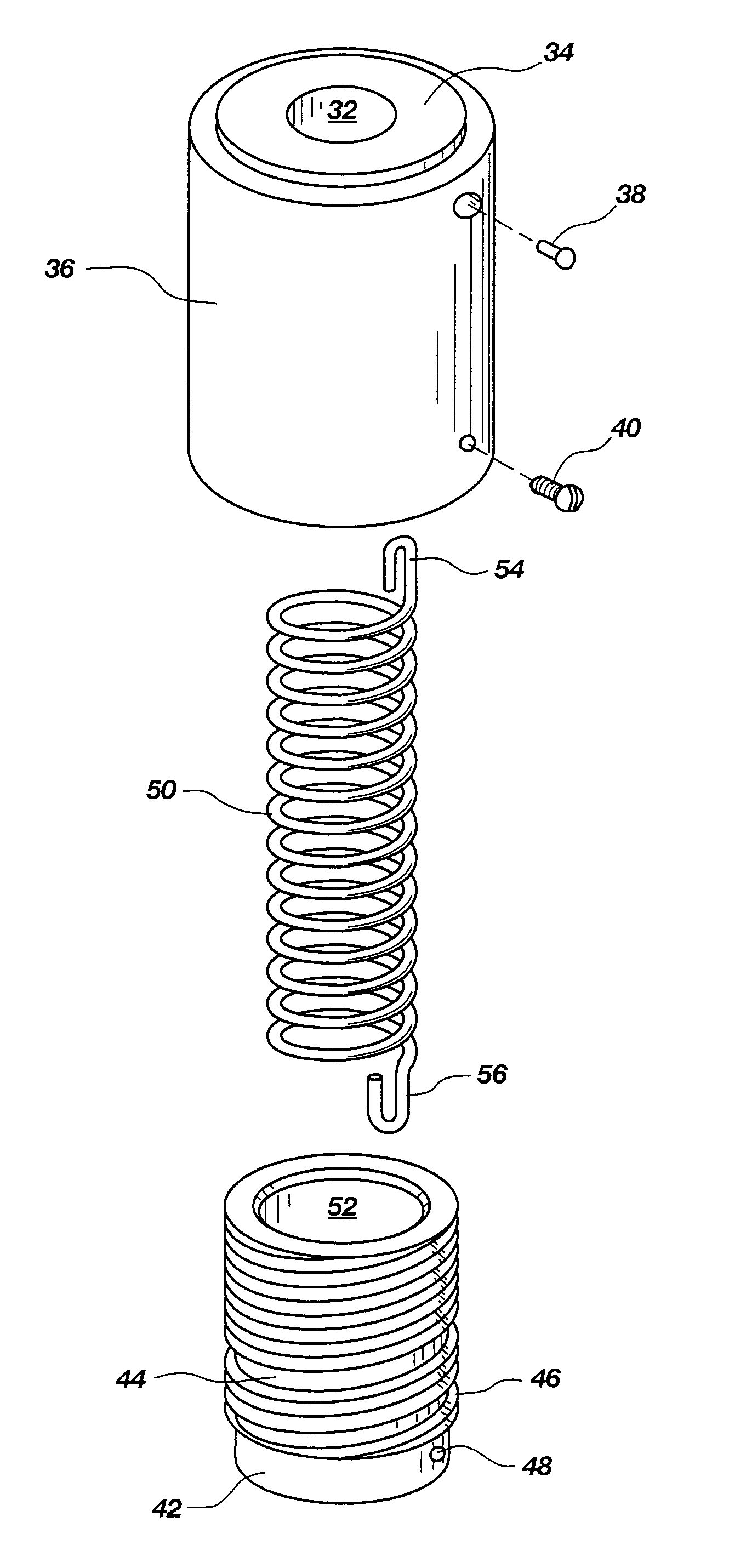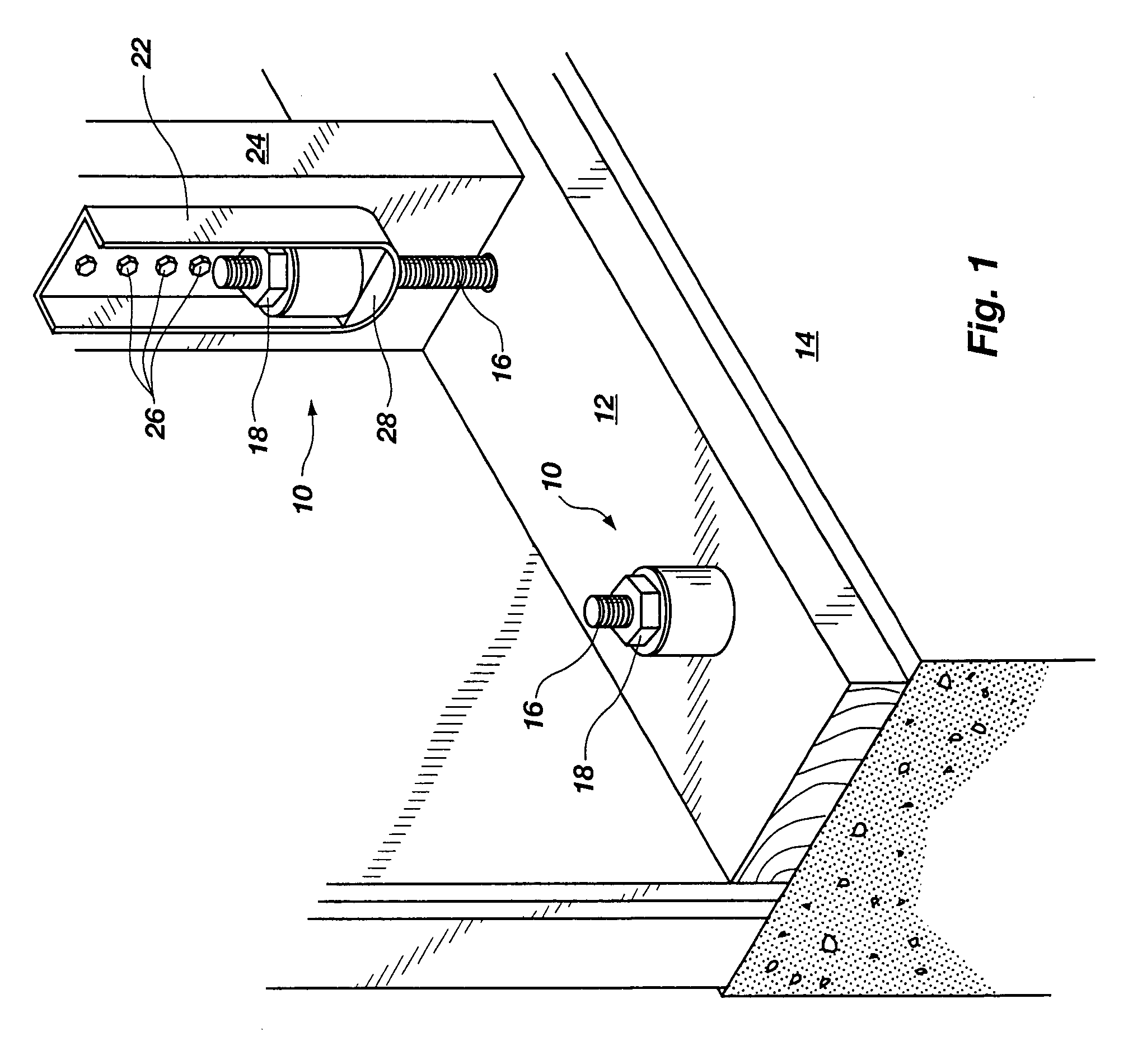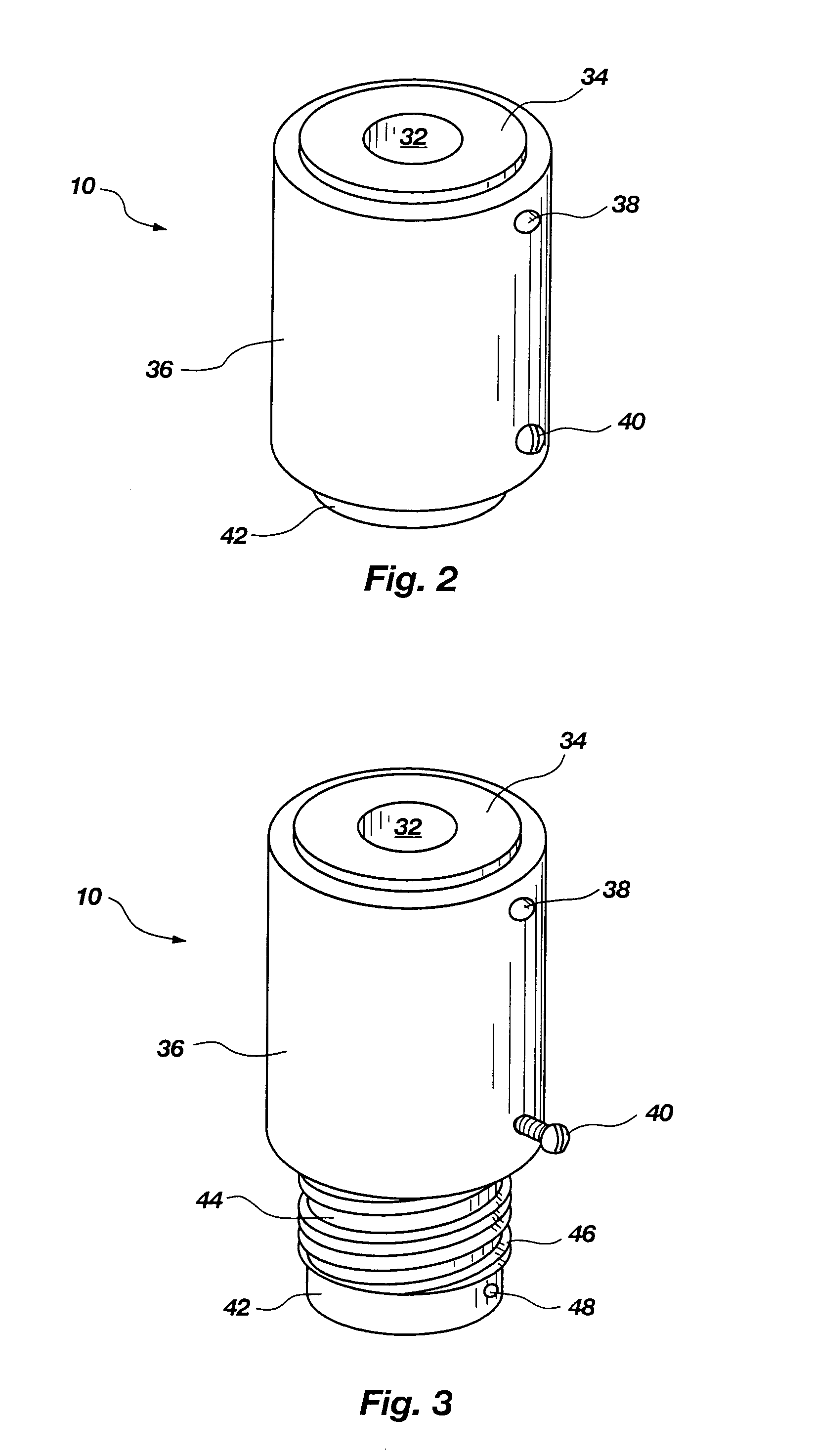Shrinkage compensator for building tiedowns
a technology for building tiedowns and compensators, which is applied to washers, screws, threaded fasteners, etc., can solve the problems of unsatisfactory solution for wood loss, shrinkage, and building settle, and current tiedown systems (including rods, straps, etc.) do not provide a solution for this problem, and achieve the effect of preventing unintentional disassembly of the uni
- Summary
- Abstract
- Description
- Claims
- Application Information
AI Technical Summary
Benefits of technology
Problems solved by technology
Method used
Image
Examples
Embodiment Construction
[0033]It will be readily understood that the components of the present invention, as generally described and illustrated in the Figures herein, could be arranged and designed in a wide variety of different configurations. Thus, the following more detailed description of the embodiments of the system and method of the present invention, as represented in 1 through 8B, is not intended to limit the scope of the invention. The scope of the invention is as broad as claimed herein. The illustrations are merely representative of certain, presently preferred embodiments of the invention. Those presently preferred embodiments of the invention will be best understood by reference to the drawings, wherein like parts are designated by like numerals throughout.
[0034]Those of ordinary skill in the art will, of course, appreciate that various modifications to the details of the Figures may easily be made without departing from the essential characteristics of the invention. Thus, the following des...
PUM
 Login to View More
Login to View More Abstract
Description
Claims
Application Information
 Login to View More
Login to View More - R&D
- Intellectual Property
- Life Sciences
- Materials
- Tech Scout
- Unparalleled Data Quality
- Higher Quality Content
- 60% Fewer Hallucinations
Browse by: Latest US Patents, China's latest patents, Technical Efficacy Thesaurus, Application Domain, Technology Topic, Popular Technical Reports.
© 2025 PatSnap. All rights reserved.Legal|Privacy policy|Modern Slavery Act Transparency Statement|Sitemap|About US| Contact US: help@patsnap.com



